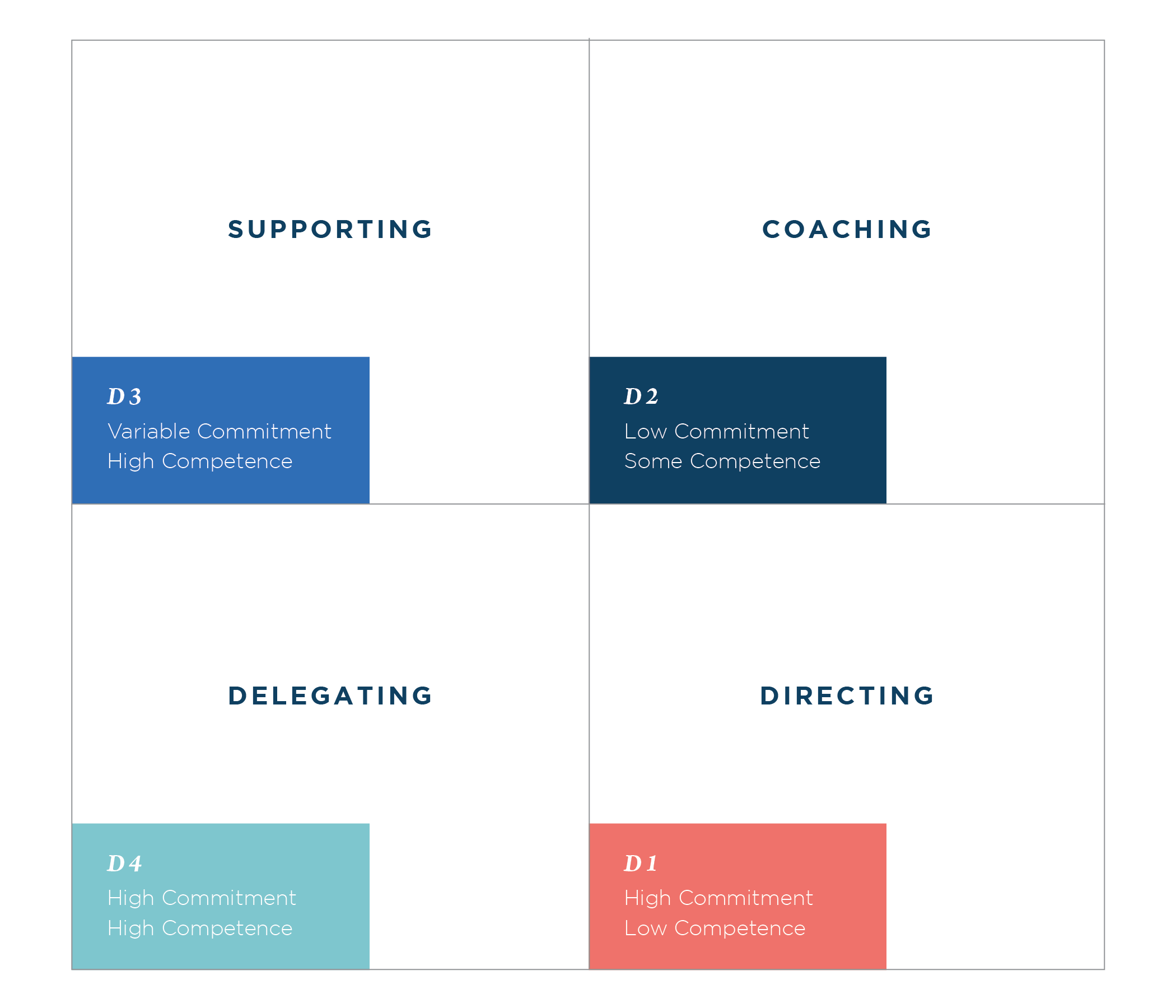While Michael Watkins created a framework that helps leaders evaluate the needs of the organization they will be leading, Ken Blanchard developed a framework, famously known as Situational Leadership, that helps leaders evaluate the development needs of each person the leader is leading.

What I Appreciate About This Framework
I love that the framework emphasizes leaders are servants and developing others is one of the chief responsibilities of a leader. The situational leadership framework challenges leaders to serve each person by adjusting their leadership to each person on the team, based on his or her level of development, instead of asking each person on the team to adjust to the leader.
As Christians, we have been served by our Savior-King who came not to be served but to serve, who took off His kingly garments, and who took on the nature of a servant so He could suffer and die to win our hearts to Himself. Serving others is not distinctly Christian, but Jesus serving us is. And because He has served us, we are now able to follow His example and serve those we lead by adjusting our leadership to them.
How to Use the Framework
Seasoned teachers know that different students benefit from different teaching and learning approaches. Loving parents learn that each child is unique, and they adjust aspects of their parenting to best care for each child. Experienced coaches know that each player is different—they don’t try to treat all the players the same way. And wise leaders know that each person on their team is unique and requires different leadership. To lead each person the same way is to discount each person’s development, experience, stage of life, gifting, and level of commitment. The situational leadership framework helps you think through how to lead and develop each person on your team.
- Someone who displays low competence and high commitment needs “directing.”
- Someone who displays low competence and low commitment needs “coaching.”
- Someone who displays high competence and varying commitment needs “supporting.”
- Someone who displays high competence and high commitment needs “delegating.”
Some people need “directive” and hands-on leadership, as a whole or for aspects of their role, because they have not yet proven themselves (low in competence). Some people need “delegating” leadership because they have proven themselves and are fully committed to the mission and values of the team. Bottom line: know each person on your team and adjust your leadership accordingly.
How the Framework Has Helped Me Think
Yes, the framework has helped me lead people differently, but the framework has also helped me discern comments from people who work for leaders who work for me. I have heard people subtly and indirectly say “I am being micromanaged.” How do I know if it is true? How do I know if someone on my team is micromanaging people?
I have learned that someone who is a D1 who thinks he is a D4 will always believe he is being micromanaged. Those who claim their leader is micromanaging them should first take an honest look at their track record. If their execution is less than stellar, their leader is wise to provide more oversight and direction. On the other hand, a leader who treats a high-capacity person who is fully committed to the organization/ministry as a D1 is leading in an unwise manner. That leader needs to be challenged to stop micromanaging. What some may call leadership is sometimes micromanagement, and what others call micromanagement is sometimes leadership. The difference depends on the level of development of the person being led.
The framework has also helped me rationalize the different viewpoints on how many direct reports a leader should have. Some, like the late Jack Welch, believe leaders can manage 12-15 direct reports. Others believe leaders should have 4-6 as a healthy span of care. The answer depends greatly on the development level of the people on the team. If you have healthy D4s, you have a flatter organization. If you are consistently leading D1s, you need a tighter span of care with more layers.






